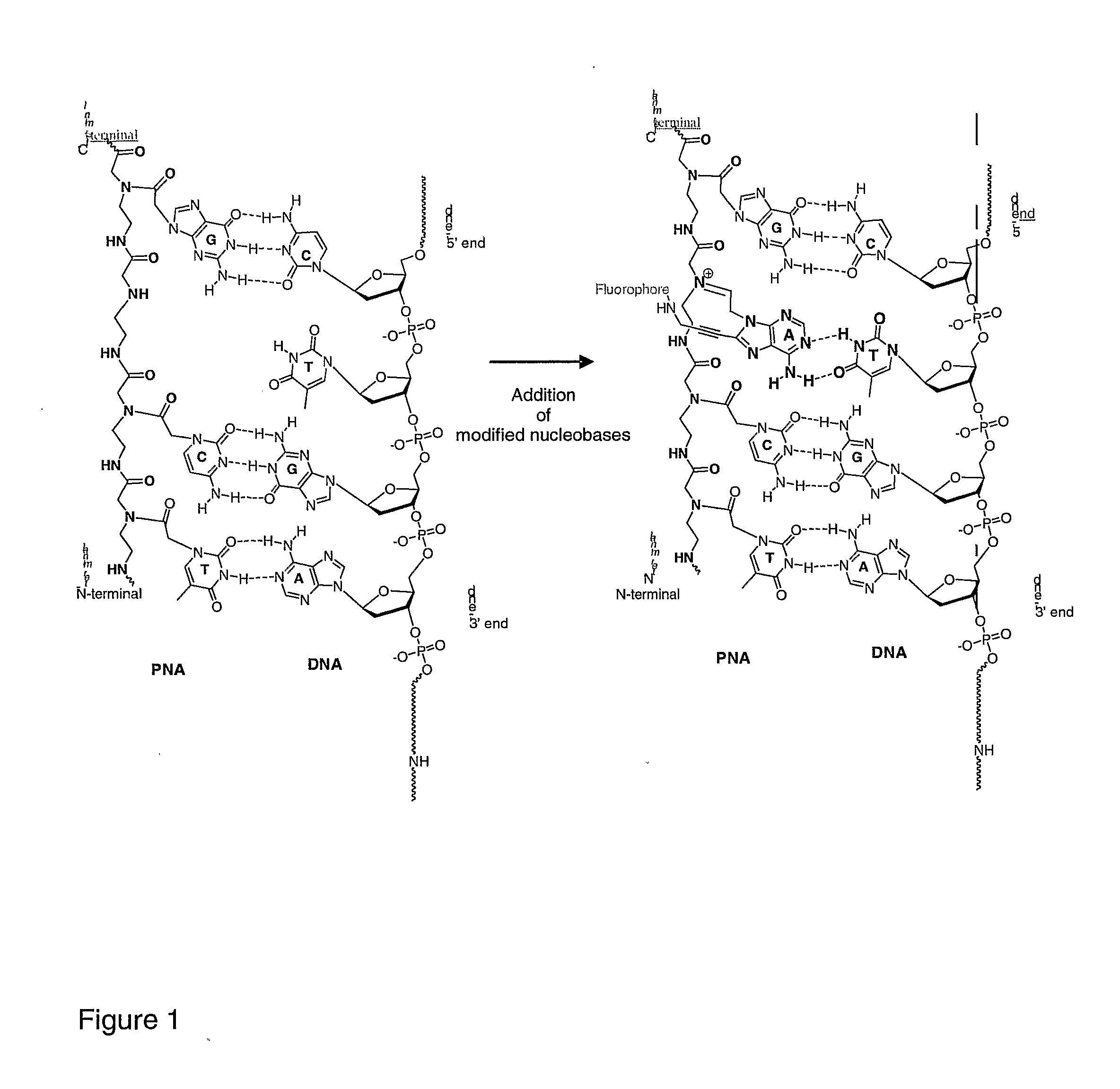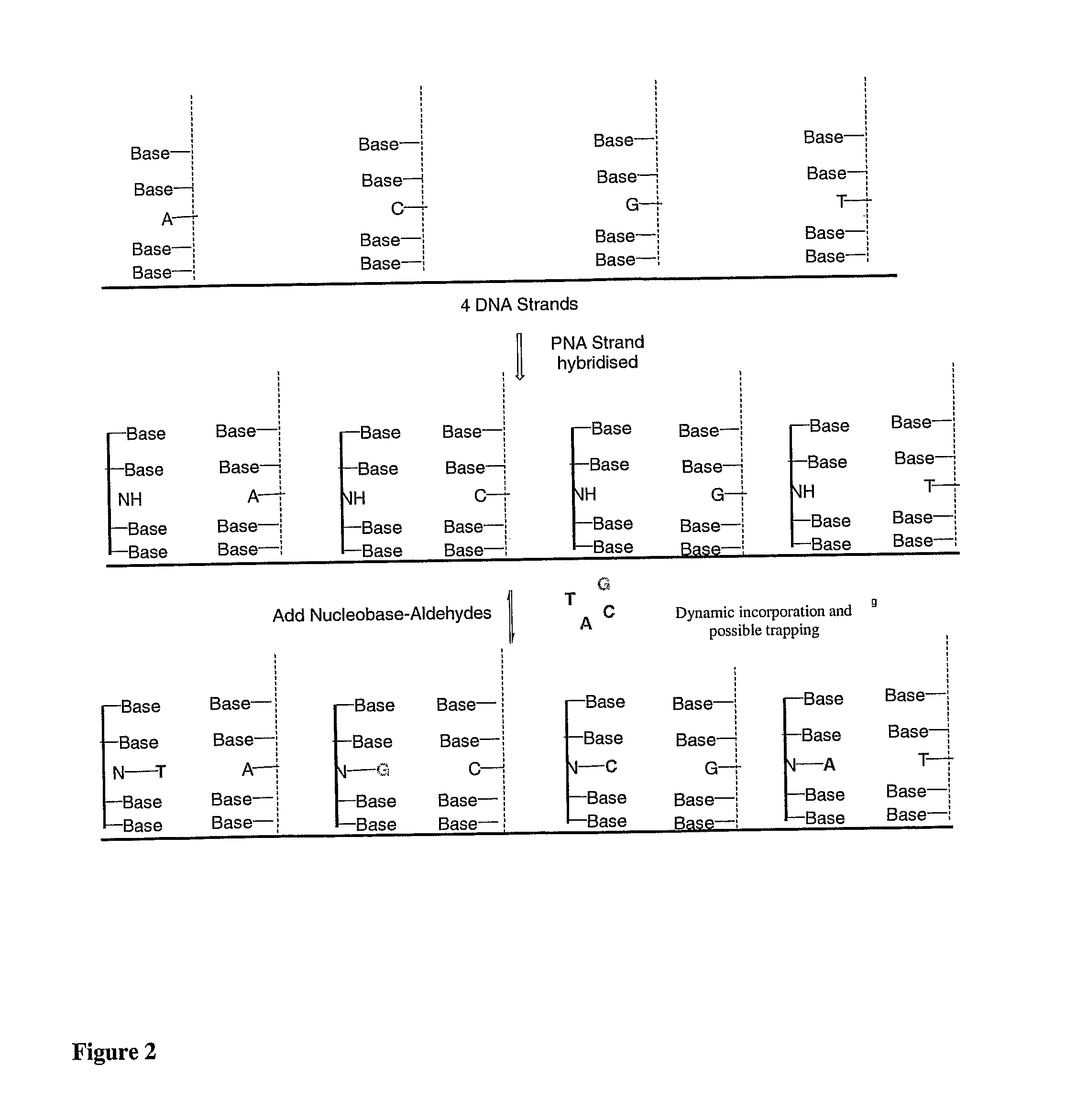Nucleobase characterisation
- Summary
- Abstract
- Description
- Claims
- Application Information
AI Technical Summary
Benefits of technology
Problems solved by technology
Method used
Image
Examples
Embodiment Construction
[0102]The present invention will now be described in detail and with reference to the following Figures which show:
[0103]FIG. 1: Structures of PNA and DNA showing PNA-DNA hybridisation.
[0104]FIG. 2: Dynamic-based SNP analysis. A complementary PNA sequence lacking a base opposite a SNP location, is hybridised to a nucleic acid sequence comprising a SNP, to form a nucleic acid / PNA duplex. By dynamic attachment, the base complementary to the SNP nucleotide integrates with the nucleic acid / PNA duplex. Each modified base may be labelled with a specific tag which may be a fluorophore (see FIG. 1)
[0105]FIG. 3: Illustration of the dynamic-based SNP analysis shown in FIG. 2.
[0106]FIG. 4: Alternative method for dynamic-based SNP analysis—DNA oligomers are hybridised with complementary PNA oligomers having free amino groups at the N-terminus which permit the dynamic attachment of the base complementary to the SNP nucleobase.
[0107]FIG. 5: Illustration of the dynamic-based SNP analysis shown in ...
PUM
| Property | Measurement | Unit |
|---|---|---|
| Mass | aaaaa | aaaaa |
Abstract
Description
Claims
Application Information
 Login to View More
Login to View More - R&D
- Intellectual Property
- Life Sciences
- Materials
- Tech Scout
- Unparalleled Data Quality
- Higher Quality Content
- 60% Fewer Hallucinations
Browse by: Latest US Patents, China's latest patents, Technical Efficacy Thesaurus, Application Domain, Technology Topic, Popular Technical Reports.
© 2025 PatSnap. All rights reserved.Legal|Privacy policy|Modern Slavery Act Transparency Statement|Sitemap|About US| Contact US: help@patsnap.com



